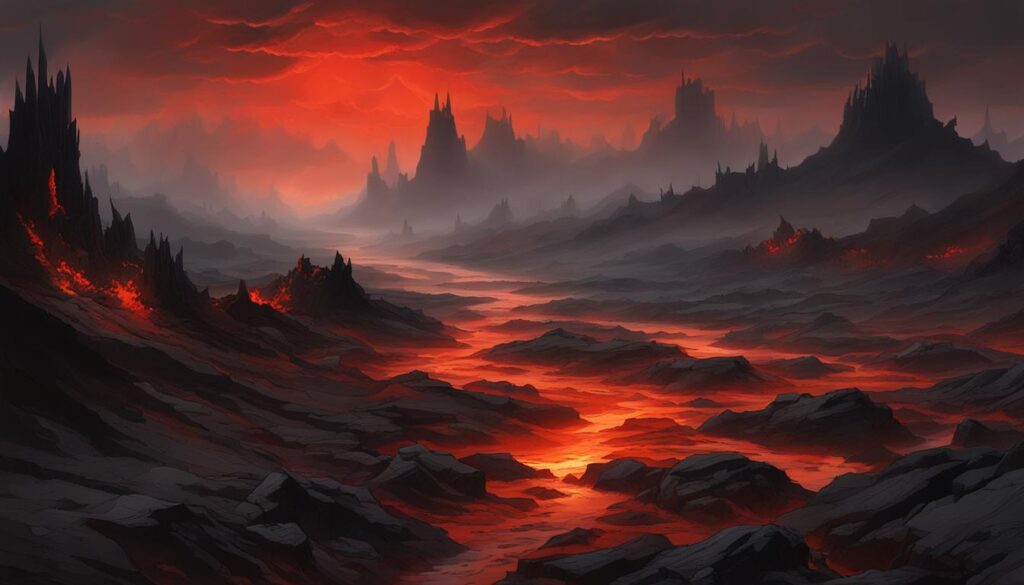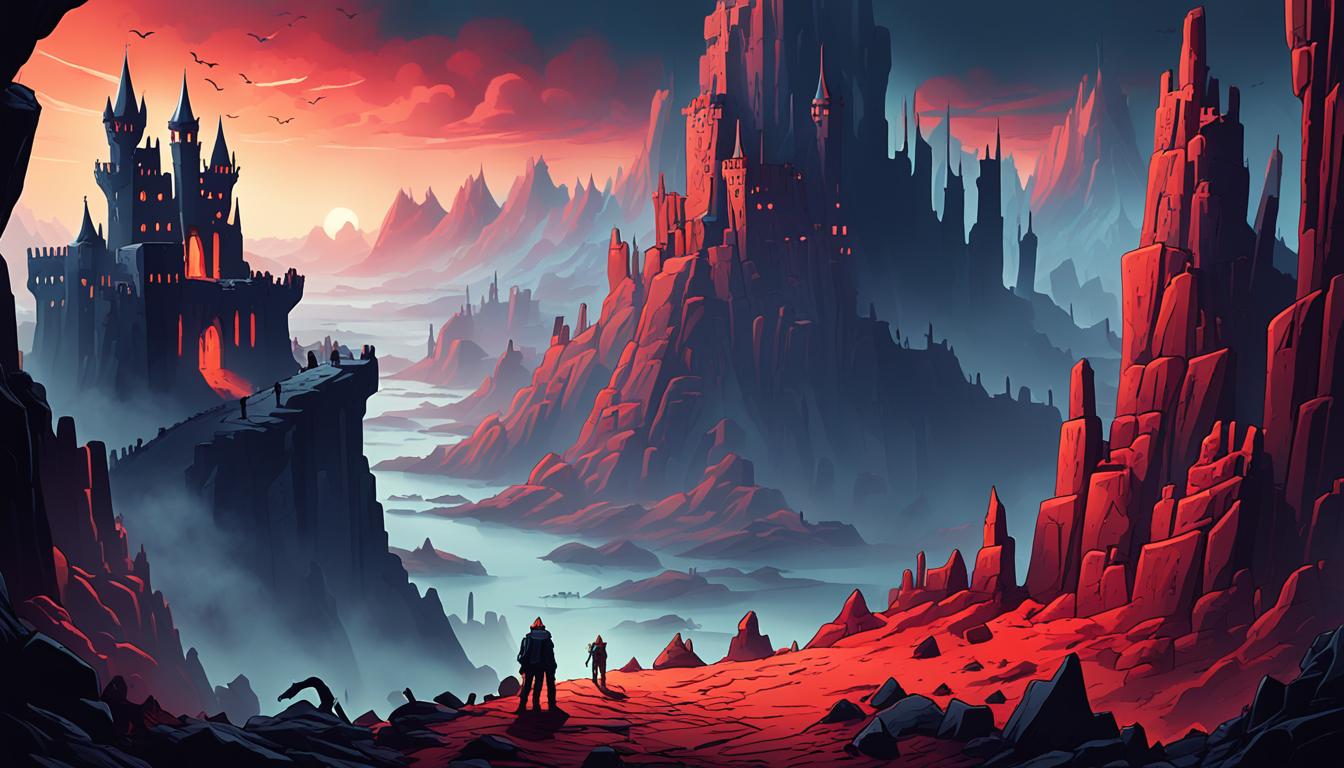Are you curious about how to say “hell” in Japanese? Well, you’ve come to the right place! In this article, we will explore the Japanese term for hell, its meaning and grammar, pronunciation, equivalent words, writing in Kanji, and its contextual and cultural usage. Let’s dive in!
The Shinto Hell of Yomi-no-Kuni
In Japanese mythology, Yomi-no-Kuni, also known as Yomi, is the Shinto underworld and the hell associated with Shinto mythology. According to the Kojiki, Japan’s oldest chronicle, Yomi-no-Kuni is ruled over by Izanami, one of the creator gods, and is described as a shadowy land of the dead located under the ground.
Unlike the Christian or Buddhist concepts of hell, Yomi-no-Kuni does not involve fire or physical torture. Instead, it serves as a resting place for the souls of the deceased, playing a vital role in the tale of Izanami and Izanagi and their journey through the realms of life and death.
In the Shinto belief system, the afterlife is not necessarily a place of punishment. It is a realm where the souls of the deceased continue to exist, separated from the living. Yomi-no-Kuni represents this transition to the afterlife, where souls await their final destination based on their actions in life.
Yomi-no-Kuni holds a significant place in Shinto mythology, highlighting the interconnectedness of life and death. It serves as a reminder that the journey of existence extends beyond the physical realm and carries spiritual implications beyond the boundaries of the mortal world.
The Buddhist Hells of Jigoku
In Japanese mythology, Jigoku is the Buddhist hell where souls are sent to endure punishments for their sins. This hell is vividly depicted in ancient scrolls known as hell scrolls.
Hell Scrolls: Illustrating Punishments and Tortures
The hells scrolls provide detailed visual representations of the various punishments and tortures that await sinners in Jigoku. These scrolls showcase the horrifying consequences that individuals may face for their transgressions.
The hells depicted in the scrolls are influenced by the Buddhist concept of naraka and the Chinese concept of diyu. Naraka refers to the realms of suffering and punishment, while diyu represents the underground realms of the afterlife.
It is believed that those who lead a life deemed unworthy of reincarnation may find themselves consigned to one of the many hells in Jigoku. The hells are categorized based on the specific crimes committed, ensuring that each sin receives its appropriate punishment.
Punishments in the Buddhist Hells
The punishments in Jigoku are diverse and terrifying, designed to match the severity of the sins committed. Sinners may face beatings from oni, demonic creatures, or endure unimaginable tortures such as being roasted or boiled alive in fiery pits.
The intensity and duration of the punishments vary depending on the nature of the sins. Some may suffer for a limited time, while others may endure eternal torment.
These vivid depictions of punishment in Jigoku serve as a reminder of the consequences of one’s actions in life and the potential suffering that awaits in the afterlife.
The King of Hell and the Hellish Bureaucracy
In Japanese mythology, the King of Hell holds a significant role in the underworld. Known as King Enma or Emma-ō, he rules over the Buddhist hells and serves as the ultimate judge of the souls of the deceased.
King Enma’s responsibilities extend beyond judgment, as he delegates the task of punishment and torture to oni, demonic creatures who carry out the dark work in hell. These oni are feared for their relentless and cruel nature, ensuring that justice is served in the afterlife.
In the complex hierarchy of the hellish bureaucracy, the souls of the deceased go through a series of trials presided over by different kings. These trials aim to evaluate the conduct and actions of the departed, determining the duration and intensity of their punishment in hell.
The final trial, known as the Great Judgment, occurs 32 years after death. It is during this trial that the ultimate fate of the soul is decided, taking into account factors such as repentance, conduct in life, and the prayers of their family.
To better understand the structure and organization of this hellish bureaucracy, refer to the table below:
| Position | Responsibility | Rulers | Punishments |
|---|---|---|---|
| Judge | Presides over trials and evaluations | Multiple kings | Varied punishments based on sins committed |
| Oni | Carries out punishment and torture | N/A | Relentless and cruel methods |
| The Great Judgment | Final trial after 32 years | King Enma | Ultimate fate determined here |
This system of judgment and punishment in hell highlights the intricacies and the severity of consequences faced by the souls who fail to live a life worthy of reincarnation. The King of Hell and the hellish bureaucracy ensure that justice is served in the afterlife.
The Concept of Hell in Japanese Mythology
The concept of hell in Japanese mythology is deeply intertwined with the religious and cultural beliefs of Japan. Drawing influences from indigenous practices like Shintoism, foreign religions like Buddhism, and the animistic roots of Japanese culture, the depiction of hell in Japanese mythology explores the realms of hell, heaven, and earth while depicting the consequences of one’s actions in life.
In Japanese mythology, various gods and goddesses are believed to govern these realms, each with their own significance and role in the larger narrative. As a result, the concept of hell in Japanese mythology is multi-faceted, reflecting the diverse range of beliefs and influences.
Shintoism, the indigenous religion of Japan, plays a significant role in shaping the concept of hell. In Shinto beliefs, the world is populated by numerous kami (gods or spirits) who inhabit natural elements and objects. This animistic belief system attributes spiritual essence to mountains, trees, rivers, and even household objects. Thus, the concept of hell is intertwined with the spiritual entities that govern the natural world.
Buddhism, which was introduced to Japan in the 6th century, also heavily influenced the depiction of hell in Japanese mythology. Buddhist hells, known as Jigoku, are vividly described in ancient scrolls and teachings. These hells are organized into different categories, each reserved for specific crimes and sins. Punishments within Jigoku range from physical tortures to psychological torments, all aiming to purify and cleanse the soul.
Japanese mythology also includes creation myths that provide insights into the existence of hell, heaven, and earth. These myths often feature divine beings and their actions in shaping the world. One such myth involves the gods Izanami and Izanagi, who are believed to have descended into the underworld (Yomi-no-Kuni) after failing to bring a child into the world. This myth underscores the connection between the realms of the living and the dead in Japanese mythology.
| Belief System | Influences |
|---|---|
| Shintoism | Indigenous practices, animism |
| Buddhism | Introduction of Jigoku, Buddhist hells |
| Creation Myths | Shaping the existence of hell, heaven, and earth |
Indeed, the concept of hell in Japanese mythology is a rich tapestry of beliefs, drawing from various sources to depict an intricate and multifaceted afterlife. Through its myths and legends, Japanese mythology offers a glimpse into the consequences of one’s actions and the intricate balance between the realms of hell, heaven, and earth.
The Japanese Underworld: Jigoku

In Japanese mythology, Jigoku is the Japanese underworld and a realm of punishment and judgment for the deceased. Believed to exist beneath the Earth, Jigoku is described as a complex network of regions with unique characteristics and various forms of torture.
Ruling over Jigoku is Emma-ō, also known as the Lord of Death. Emma-ō presides over the examination and judgment of souls, ensuring that justice is served accordingly. The structure and hierarchy of Jigoku are intricate, with guardians and rulers responsible for enforcing punishments and maintaining order.
The Japanese underworld is a place where souls face the consequences of their actions in life. Punishments within Jigoku are tailored to match the sins committed, ensuring a fair and fitting retribution. This realm serves as a reminder of the importance of leading a moral and virtuous life.
The Eight Great Hells of Jigoku
Within Jigoku, the Japanese underworld of punishment and judgment, there are 16 different hells, categorized into eight “Hot Hells” and eight “Cold Hells”. Each hell has its own specific form of punishment, duration of stay, and is reserved for different crimes.
In these hells, sinners face unimaginable torments that match the severity of their sins committed in life. For instance, in the Burning Hell, souls endure the agonizing punishment of being burned alive repeatedly. In the Hell of Screams, sinners are tormented by incessant cries of agony. The punishments are designed to ensure that justice is served in the afterlife, reflecting the principle of retribution.
These Eight Great Hells within Jigoku serve as a chilling reminder of the consequences of one’s actions. The souls condemned to these hells experience the wrath of their crimes for a specific duration, granting them an opportunity for redemption. The vivid depiction of punishments such as burning and the haunting cries of suffering adds to the vivid imagery of the Japanese underworld, making it a stark contrast to the conventional Western notions of hell.

